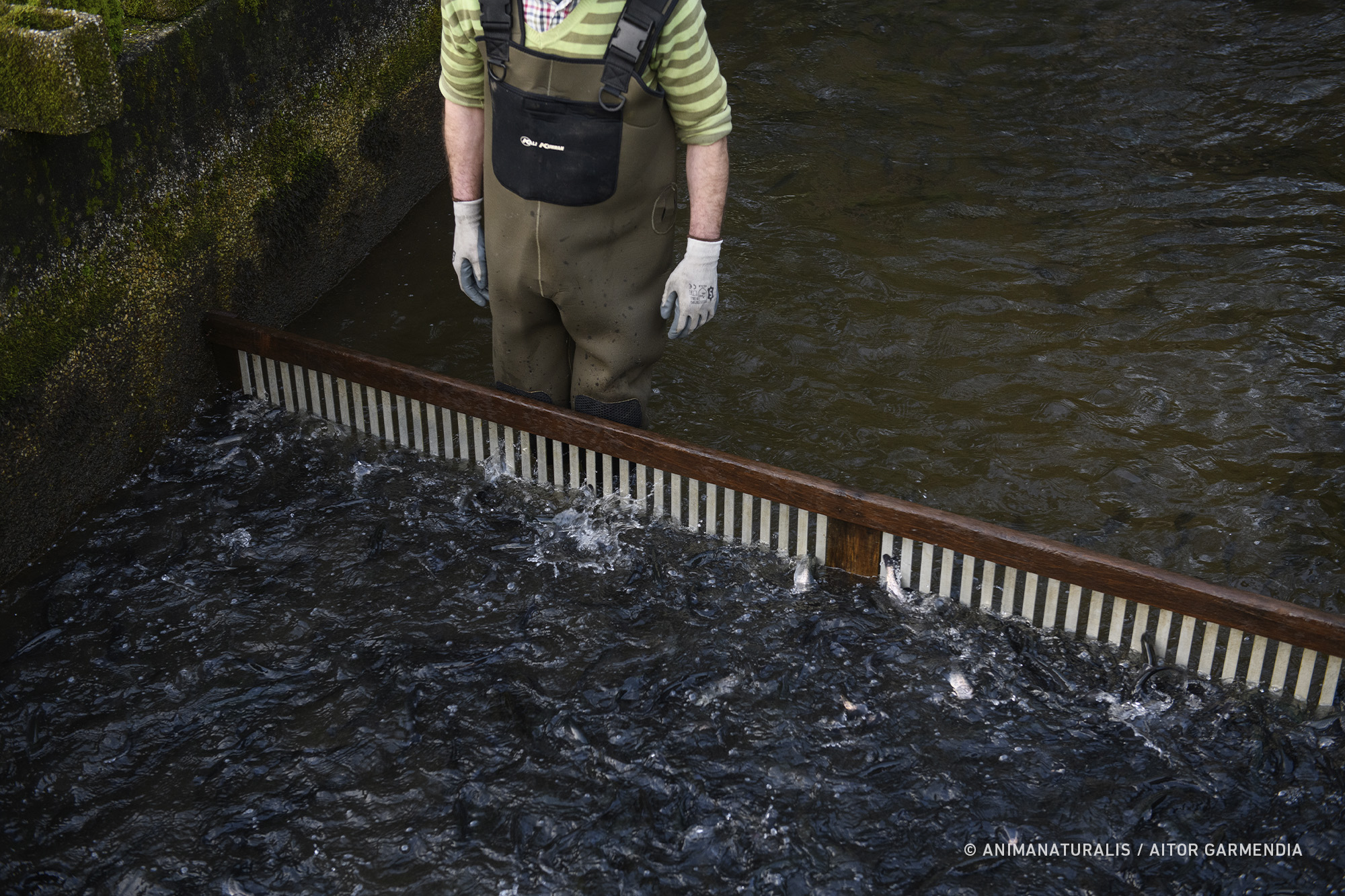Breeding and Fattening in Fish Farms

Rainbow trout is considered an efficient species for production for several reasons. It has high tolerance to temperature variations and greater domestication compared to other salmonids, making it easy to confine. It grows faster than brown trout and reaches sexual maturity earlier, typically at 2-3 years of age. Females can produce up to 2,000 eggs per kilogram of body weight. Most spawn only once a year during spring, between January and May.
In the wild, trout typically inhabit freshwater rivers and lakes, though some migrate to the ocean to grow and feed before returning to rivers to spawn. In captivity, trout breeding and fattening involves intensive practices and unnatural conditions that cause significant suffering.
On fish farms, trout cannot reproduce naturally. Instead, artificial spawning is used - an invasive process where eggs and semen are manually extracted from anesthetized trout using mature 3-4 year old broodstock males. Keeping males and females separated, combined with constant handling, creates a high-intervention environment detrimental to welfare.
After hatching, fry remain in covered pools for 10-14 days. When they reach 8-10 cm, trout are transferred to outdoor fattening tanks where they compete for space and food under high stress levels.
They remain confined 9-20 months in concrete tanks until reaching market size (typically 30-40 cm and 1-2 kg). Market demand also influences characteristics like flesh color: Europe prefers pink flesh while the US prioritizes whiter flesh, requiring dietary changes that disregard fish needs. In Spain, "salmon trout" represents 55% of production versus 45% for "white trout".
In their natural habitat, trout are carnivores feeding on live prey like invertebrates, small fish, insects, shrimp, crustaceans, tadpoles, and worms. On farms, they receive processed feed that inadequately replicates their natural diet, impacting welfare and physiology.
Producing just one kilogram of fish for human consumption requires about 5 kg of wild fish - a clear sustainability contradiction that increases rather than alleviates marine resource overexploitation.
Notably, wild rainbow trout live 5-10 years depending on environmental conditions, food availability, and predators, while intensive farming reduces lifespan to just 12-24 months until they reach slaughter size.
Sources:
- Spanish Ministry of Agriculture, Fisheries and Food. (2023). Technical Sheet: Rainbow Trout.
https://www.mapa.gob.es/es/pesca/temas/acuicultura/trucha-arcoiris_tcm30-628444.pdf - Tacon, A. G. J., & Metian, M. (2014). Fish In - Fish Out (FIFO) Ratios explained.
https://www.researchgate.net/publication/268345264_Fish_In_-Fish_Out_FIFO_Ratios_explained
